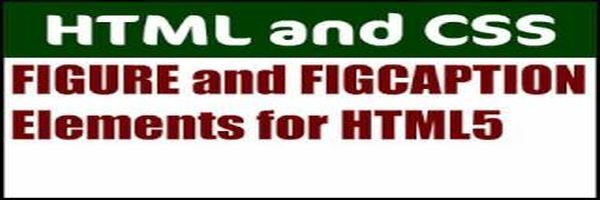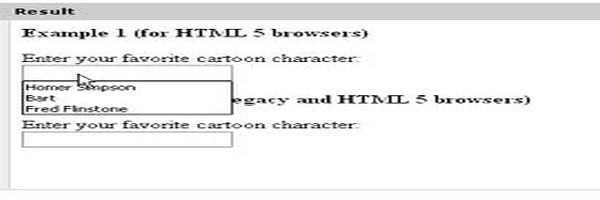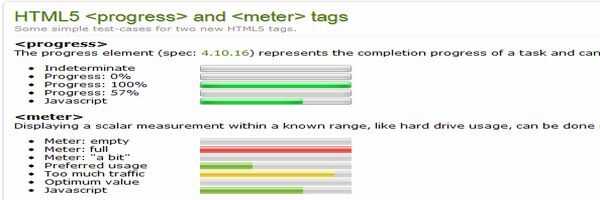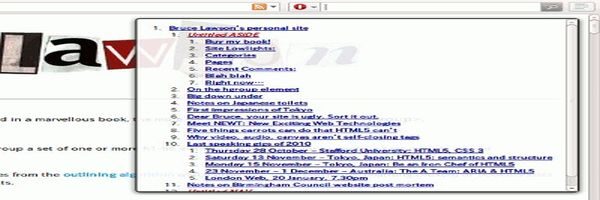HTML5 brings in completely a novel set of attributes and elements that allow the developers create documents which are easily understandable by other systems especially the search engines. With the help of the novel set of HTML5 tags you can display data in a more unique manner and take on some of the load that actually requires complex web browser plug-ins such as Silverlight or Flash or complex JavaScript. During the development of HTMl5 certain rules were established which are mentioned below:
- Introduction of HTML5 should reduce the usage of external plugins such as Flash.
- The development process using HTML5 needs to be transparent to the public.
- HTML5 should have more Markups so as to completely replace scripting.
- The new features of HTML5 should be based on DOM, CSS, HTML and JavaScript.
- HTML5 should be independent of the device and should have better error handling mechanisms.
Keeping in mind the above rules few interesting set of features were introduced into HTML5 along with the addition of few interesting HTML5 tags which are hidden from most of the web designers. Here is just a glance at the interesting features that have been added to HTML5 along with the list of hidden HTML5 tags .
- HTML5 has introduced new form controls such as Search, Calendar, URL, Date, Email and Time.
- HTML5 provides support for local storage.
- HTML5 has introduced a new tag namely which is of great use in 2D drawing.
- You have several content specific elements such as , , , and lots more.
- HTML5 as well provides you the privilege for Media Playback with the use of and HTML5 tags.
Here is the list of Hidden HTMl5 Tags that will make your life easier when coding:
1) HTML5 Tag
This HTML5 tag will provide you a bitmapped surface to work with something similar to what you will be suing with GDI+ or the .NET image object. Despite the fact that Canvas is not that perfect it is yet considered a great way of building graphs and charts which have at all times been the weak drop in HTML. You can as well create custom graphics with the tag by replicating the layers with the use of multiple canvas objects piled on top of each other.
2) and Tag
The HTML5 tag is a container for the content specifically for pictures but it can be used for anything not just images. is a HTML5 tag that is used inside the tag for providing a subtitle or caption to the contents that are contained in the tag. For instance say you might want to use 4 images that indicate the sales growth chart inside the tag and the tag will have text embedded like “Yearly Sales Growth 2000-2004. The pictures will display next to each other and the text inside the tag will be running below all the four.
3) Tag
This HTML5 tag functions like a combo box where in the system will provide the users with an already created list of suggestions but the users can freely type anything they want it need not necessarily be from the pre made list. There are several uses of this tag for instance it can be used in a search box with pre populated items based on the browsing history of the user. This is a great add on as it restricts the usage of bunch of JavaScript libraries for implementing this functionality and makes it simpler.
4) and Tags
These are the two HTML5 tags which are similar and will look alike on the screen in most of the cases but they do have their own different semantic meanings. The HTML5 tag is used for measurements and gauges of value such as quantity used thermometers and lots more whereas the HTML5 tag is used to indicate the completion of a task or to show how much it has been completed. This tag as well has an indeterminate mode wherein if there is something whose duration is not known then in such situations indeterminate mode is used for example searching a database.
5) Tag
All the website owners prefer to have a collapsing and expanding block of text. Despite the fact that it is pretty easy and simple to achieve with the use of Server side code or JavaScript libraries this tag makes it much easier and simpler. This tag just functions exactly the way designers have been doing from ages i.e. the tag will create a simple block that can collapses or expand the content whenever the header is clicked. Since it is a novel innovation to HTML5 it does not have a wide support but is likely to have soon.




